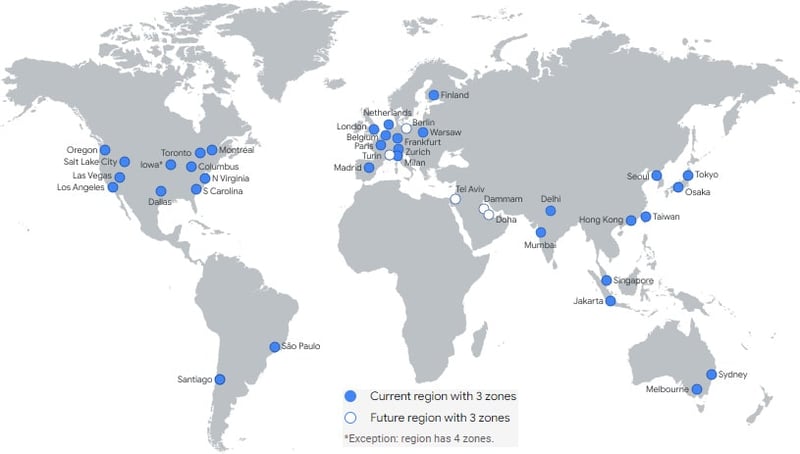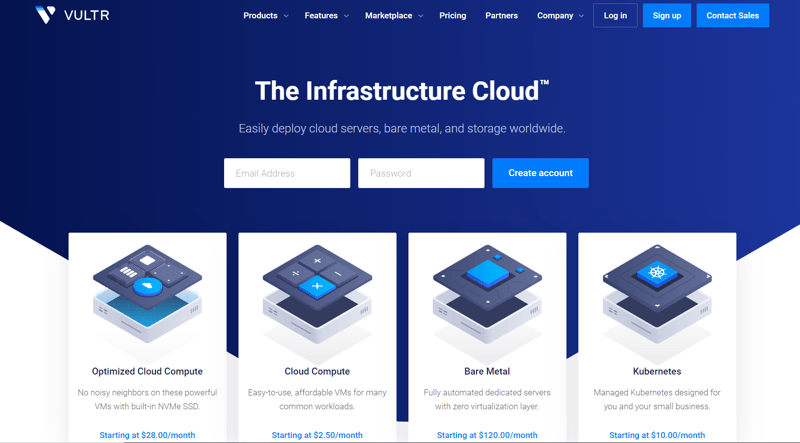Cloud computing and the top 6 cloud service providers delivering these services, have brought fundamental changes to the market backdrop of IT infrastructure globally. Public cloud service providers are facilitating the inherent efficiencies of distributed cloud computing, which is enabling innovative software applications and platforms to be built, while simultaneously enhancing information security and privacy controls. As such, it is critical to understand each leading cloud service provider, as well as their varying strategies
1. Amazon Web Services (AWS)
Amazon Web Services (AWS), the cloud computing service of Amazon.com, is the largest cloud service provider globally. From its data centers, the business provides over 200 fully featured services including compute, storage, and database.
AWS currently has 26 regions and 84 availability zones in operation. These regions and availability zones are located throughout the United States, AWS GovCloud (US), Americas, Europe, Asia Pacific, as well as in the Middle East & Africa.
Amazon Web Services (AWS) has grown net sales from ~$8 billion in 2015, to more than $17 billion for 2017, reaching $35 billion by 2019, and now generating almost $74 billion on an annual basis. This staggering growth has been driven by the expansion of AWS from 32 availability zones in 2015, to 52 availability zones in 2017, and now reaching 84 availability zones at present. In parallel, the company has launched thousands of new AWS services which has also fueled its expansion.
2. Microsoft Azure
Microsoft Corporation’s Intelligent Cloud segment contains Azure, the second largest cloud service provider globally. Through Microsoft Azure, the company delivers a consistent hybrid cloud experience, developer productivity, artificial intelligence (AI) capabilities, and security & compliance.
Microsoft Azure presently has 60 regions and 116 availability zones in operation. These regions and availability zones are distributed throughout the United States, Azure Government (U.S.), Americas, Europe, Asia Pacific, as well as in the Middle East & Africa.
Over 200 physical Microsoft Azure data centers are located worldwide, which house computer servers, each fitted-out with independent power, cooling, and networking. The company connects this data center infrastructure with more than 175,000 miles of fiber lines across 140 countries.
Microsoft Cloud revenue, which includes revenue from Azure and other cloud services, Office 365 Commercial, the commercial portion of LinkedIn, and Dynamics 365, reached $23.4 billion for the latest quarter, an increase of 32% year-over-year. As such, on an annualized basis, Microsoft Cloud revenue currently stands at $93.6 billion. However, Microsoft does not explicitly disclose Azure revenues, meaning that Azure is only a subset of total Microsoft Cloud revenue.
3. Google Cloud Platform (GCP)
Google Cloud Platform (GCP), part of Alphabet Inc, is the third largest cloud service provider globally, providing enterprise-ready cloud services. GCP enables developers to build, test, and deploy applications on its distributed and scalable infrastructure, while utilizing the service’s capabilities in security, data management, analytics, and artificial intelligence (AI).
Google Cloud today has 34 regions and 103 availability zones in operation. These regions and availability zones are situated throughout the United States, Americas, Europe, and Asia Pacific.
Alphabet Inc’s Google Cloud unit earns revenue from the fees it charges for its infrastructure, platform, and other services. For the latest quarter, Google Cloud generated $5.8 billion, an increase of almost 44% year-over-year. Therefore, on an annualized basis, Google Cloud produces $23.3 billion of revenue.
4. Vultr
$100 Sign Up Credits using this Link
With 200k plus customers from 150 countries around the globe, Vultr is known for offering cloud servers with resilient SSD storage. This advanced cloud platform aims to deliver cloud infrastructure and hosting services to facilitate businesses and developers. With 17 data centres, it simplifies the cloud environment for developers present in different countries of the world.
One-click deployment, 100% SSD storage, fully automated and dedicated servers fascinate the users. Similarly, as compared to the competitors, with a very reasonable price tag and user-friendly dashboard, Vultr is considered one of the best cloud service providers. Definitely, it could be a trustworthy option for small scale and limited budget ventures.
5. DigitalOcean
DigitalOcean is a cloud service provider offering on-demand infrastructure and platform tools to smaller customers including developers, start-ups, and small- and medium-sized businesses (SMBs).
Today, DigitalOcean operates 8 regions across its 14 data centers. Specifically, the company leases data centers in the New York City and San Francisco metro markets, as well as in Toronto, Canada; London, UK; Amsterdam, Netherlands; Frankfurt, Germany; Bangalore, India; and Singapore.
DigitalOcean delivers its infrastructure and software solutions to 620,000 customers in more than 185 countries. Uniquely, ~70% of DigitalOcean’s revenue derives from outside of the United States. Similar to OVHcloud, DigitalOcean competes on price, often being 50%+ more cost-effective than the largest cloud service providers.
6. Linode (Akamai)
In March 2022, Akamai Technologies, a content delivery network (CDN) and security solutions provider, acquired Linode for $900 million.
Linode currently has 11 data center regions in operation, through which it provides compute in the form of containers and virtual machines, as well as its storage services. The company’s data centers are located in the markets of Newark, New Jersey; Atlanta, Georgia; Dallas, Texas; Fremont, California; Toronto, Canada; London, UK; Frankfurt, Germany; Tokyo, Japan; Singapore; Mumbai, India; and Sydney, Australia.
Linode’s infrastructure-as-a-service (IaaS) platform serves 1 million customers and businesses worldwide with its cloud computing capabilities. The company competes on price and focuses on serving developers, as well as start-ups and enterprises.
Happy Coding !!!
Thank You for reading till here. Meanwhile you can check out my other blog posts and visit my Github.
This post includes affiliate links; I may receive compensation if you purchase products or services from the different links provided in this article.

























